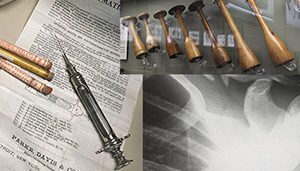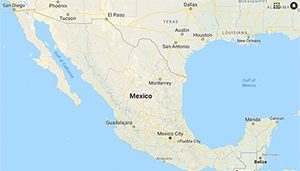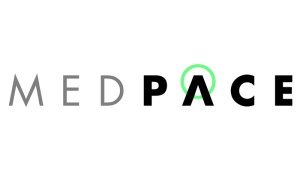 NuVasive Inc. (NSDQ:NUVA) executives yesterday teased the robot-assisted surgery solution it’s developing for spinal procedures in discussing its fourth-quarter and full-year results, which largely met the forecast on Wall Street.
NuVasive Inc. (NSDQ:NUVA) executives yesterday teased the robot-assisted surgery solution it’s developing for spinal procedures in discussing its fourth-quarter and full-year results, which largely met the forecast on Wall Street.
Chairman & CEO Greg Lucier told analysts during a conference call that San Diego-based NuVasive’s “surgical intelligence platform,” slated to be unveiled at the North American Spine Society meeting in Los Angeles Sept. 26-29, is designed to incorporate “monitoring, planning, imaging, 2D and 3D navigation and automation, and further insights” to optimize spine surgeries.
“We are really excited about this comprehensive solution composed of monitoring and surgical planning. It is a significant step in our evolution from a product-focused company to a systems-based company focused on delivering end-to-end solution that does not only enable predictable clinical and economic outcomes, but also pull-through our implants and creates stickiness in the market,” Lucier said, according to a Seeking Alpha transcript, noting that the the LessRay radiation reduction software it launched last September will be a key component of the system.
That said, however, the NuVasive platform will emphasize navigation over a purely robotic instrumentation arm, he said.
“Most surgeries don’t require a robot. Seventy percent of them are more straightforward and it is those surgeries that we’re focusing on and navigation is a far more impactful tool than adding in a robot. And so I think it’s super important that you segment the market properly and then segment it in terms of the right solutions for it,” Lucier said. “So navigation has big impact across very complex surgeries as well as what we would say is a little bit more simpler ones, but robotics is really relegated to, at least our view, in terms of economics that will support it, that much more complex deformity cases.”
Fourth-quarter earnings meet The Street, sales just miss
NuVasive reported a fourth-quarter profit gain of 275.8% to $24.0 million, or 46¢ per share, on sales growth of 0.2% to $271.7 million for the three months ended Dec. 31, 2017, compared with Q4 2016. Much of that gain was due to an $18.3 million gain on last year’s tax reforms; adjusted to exclude that and other one-time items, earnings per share were 56¢, exactly in line with the consensus on Wall Street, where analysts were looking for sales of $272.6 million.
Full-year profits also surged on the tax wave, rising 123.5% to $83.0 million, or $1.50 per share, on a sales gain of 7.0% to $1.03 billion compared with the prior year. The tax benefit for 2017 was 56.5 million; adjusted EPS were $1.91 for the year.
“2017 was a milestone year for NuVasive as we surpassed the $1 billion revenue mark, driven by impressive international sales growth of more than 20% and achieved record profitability of 18.2% non-GAAP operating margins in the fourth quarter,” Lucier said in prepared remarks. “As we set the stage for 2018, we remain focused on accelerating our growth momentum by furthering our investment in R&D to bring innovative offerings to the market, developing our differentiated intraoperative neurophysiological monitoring services business with the completed acquisition of SafePassage and growing the number of surgeons worldwide who use NuVasive technologies to improve patients’ quality of life.”
NuVasive said it expects to post adjusted 2018 EPS of $2.44 to $2.47 on sales of $1.095 billion to $1.105 billion.
NUVA shares, which closed yesterday up 0.8% at $48.23 apiece, gained another 0.2% today in pre-market trading to reach $48.31.
Shareholder lawsuits in the rearview
In a separate regulatory filing, NuVasive revealed the resolution of a pair of lawsuits brought by investors.
In August 2013, a purported class-action lawsuit filed in the U.S. District Court for Southern California alleged that NuVasive submitted false claims to Medicare and Medicaid in violation of state laws and regulations, made illegal kickbacks to doctors and engaged in off-label promotion of its products and services after the U.S. Justice Dept. opened a probe.
The company in July 2015 settled with the Justice Dept. for $13.5 million and no admission of wrongdoing; the suit won class-action certification in March 2017 and last May NuVasive lost a bid to stay the case. After the denial of an appeal that August and a summary judgment bid this month, NuVasive agreed to pay $7.9 million to settle the case without admitting wrongdoing. The settlement, which the court must still approve, should be fully covered by insurance, the company said in the filing.
Another investor’s lawsuit, a derivatives case brought in California state court in September 2016 with similar allegations, the court granted NuVasive’s bid to dismiss the case with prejudice last September and in December denied the plaintiff’s motion for reconsideration and to vacate the judgment, according to the filing.
The post NuVasive teases robotics offering with Street-meeting Q4 appeared first on MassDevice.
from MassDevice http://ift.tt/2BS4bsq


 Shares in
Shares in  Researchers at the 47th Society of Critical Care Medicine reported this week that
Researchers at the 47th Society of Critical Care Medicine reported this week that 


 Financial trends for the medical device industry last year point to a continuing series of challenges for large and small companies alike in 2018, ranging from a tightening M&A landscape to an even tighter funding scene – with the FDA making a surprise appearance as a potential bright spot.
Financial trends for the medical device industry last year point to a continuing series of challenges for large and small companies alike in 2018, ranging from a tightening M&A landscape to an even tighter funding scene – with the FDA making a surprise appearance as a potential bright spot.
 Whether you’re talking about surgical robotics or efforts to bring more value to healthcare, the word “
Whether you’re talking about surgical robotics or efforts to bring more value to healthcare, the word “

 Edwards Lifesciences
Edwards Lifesciences Shares in
Shares in 



 Masimo (Nasdaq:
Masimo (Nasdaq: 
 Integra Lifesciences today reported fourth-quarter and full-year results that beat analysts expectations, but its stock is still down slightly — perhaps because its gross margins were down as it digests more than $1.2 billion worth of acquisitions.
Integra Lifesciences today reported fourth-quarter and full-year results that beat analysts expectations, but its stock is still down slightly — perhaps because its gross margins were down as it digests more than $1.2 billion worth of acquisitions.




 Shares in
Shares in  The stock of clinical contract research organization Medpace (Nasdaq:
The stock of clinical contract research organization Medpace (Nasdaq: 



 Managing a chronic illness can feel like a full-time job. Between juggling multiple appointments with an array of specialists and following a meticulous care plan, patients dealing with conditions like diabetes have a lot on their plate.
Managing a chronic illness can feel like a full-time job. Between juggling multiple appointments with an array of specialists and following a meticulous care plan, patients dealing with conditions like diabetes have a lot on their plate.
